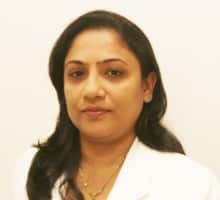Request Appointment
Enter your details and we will be in touch with you shortly;
Or call
8655885566
between 8 am and 8 pm.

Narrowing of the lumbar spinal canal

Pain is a common symptom of spinal stenosis and the location of the pain will depend on whether the stenosis is present in the upper or lower portions of the spine. The symptoms of lumbar spinal stenosis may become severe for a little while but then subside. These are some of the most common symptoms associated with lumbar spinal stenosis:
Reduced or complete loss of bladder and bowel control
 Professional diagnosis required
Professional diagnosis required Chronic, can last for years
Chronic, can last for years Treatable with 12 weeks of QI Spine Therapy
Treatable with 12 weeks of QI Spine TherapyAging is a key factor in lumbar spinal stenosis and this condition is most commonly caused by arthritis, specifically osteoarthritis which causes the thickening of the spinal ligaments as well as the occurrence of bone spurs. Some of the other causes of lumbar spinal stenosis include:
 Professional diagnosis required
Professional diagnosis required Chronic, can last for years
Chronic, can last for years Treatable with 4 weeks of QI Spine Therapy
Treatable with 4 weeks of QI Spine TherapyMild to moderate cases of lumbar spinal canal stenosis can be managed with conservative treatment alone. Surgery is only advisable if non-invasive treatments for lumbar spinal canal stenosis are ineffective. Studies show that many patients experience an improvement immediately after surgery but this is a temporary improvement that decreases with time. However, a conservative but holistic approach can help to reduce pain and improve mobility.
Lumbar spinal canal stenosis is often the result of a spinal problem such as spondylolisthesis where one vertebra slips over another, significantly narrowing the spinal canal. The most common spondylolisthesis is caused by the slippage of the L4 vertebra over the L5 (the lumbar spine) which is why lumbar spinal canal stenosis is the most common type of spinal canal stenosis. Identifying and treating the underlying spinal problem will go a long way in obtaining lasting relief from this condition. QI uses Digital Spine Analysis (DSA), an advanced European technology that provides precise functional diagnosis. Unlike MRI and Xray tests that only identify bone and tissue damage, the DSA test can quantify muscle function and identify weakened muscles. Based on these findings, QI spine specialists recommend isolation and precision movements that target these muscles for quick and lasting pain relief.
QI offers unique treatment protocols that are derived from an algorithm which is based on over 47,000 past cases. The protocols are customized according to the needs of each patient and ensures that every patient with lumbar spinal canal stenosis receives treatment that is best suited to his/her needs. This evidence-based treatment system offers higher objectivity and increases the success rate of the treatment and therapy plan.
Inflammation is a common component of lumbar canal stenosis and so NSAIDs (non-steroidal anti-inflammatory drugs) may be prescribed. These medications are effective in reducing lumbar spinal stenosis pain but they pose significant cardiovascular and gastrointestinal risks. However, QI utilizes Frequency Specific Microcurrent (FSM) technology from Germany to reduce the lumbar spinal canal stenosis pain without any side effects. The FSM method uses a low-level electric current to promote repair and eliminate back pain. Heat and cold therapy is also effective in reducing pain and is often combined with medical movements such as the McKenzie method and kinetic control movements to relieve the pressure on the affected areas. Lumbar spinal canal stenosis can become severe if it is left untreated. It can also result in permanent nerve damage so visit a spine specialist at the earliest for a diagnosis.
 Professional diagnosis required
Professional diagnosis required Chronic, can last for years
Chronic, can last for years Treatable with 4 weeks of QI Spine Therapy
Treatable with 4 weeks of QI Spine TherapyMild to moderate cases of lumbar spinal canal stenosis can be managed with conservative treatment alone. Surgery is only advisable if non-invasive treatments for lumbar spinal canal stenosis are ineffective. Studies show that many patients experience an improvement immediately after surgery but this is a temporary improvement that decreases with time. However, a conservative but holistic approach can help to reduce pain and improve mobility.
 Professional diagnosis required
Professional diagnosis required Chronic, can last for years
Chronic, can last for years Treatable with 4 weeks of QI Spine Therapy
Treatable with 4 weeks of QI Spine Therapy


Have a question?
Ask our spine specialists
Who is a QI Spine Specialist?
A QI Spine Specialist is a medical expert with

Dr. Nidhi Sanghvi Shah

Dr. Shital Gaikwad

Dr. Richa Bhatia
9000 hours
of specialisation in treating back and neck conditions
32 hours
of spine physiotherapy specialisation methods in McKenzie concepts, Kinetic control, Neurodynamic solutions, Mulligan’s concepts
500 hours
and 6 months of QI Spine specialisation courses